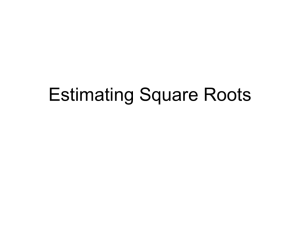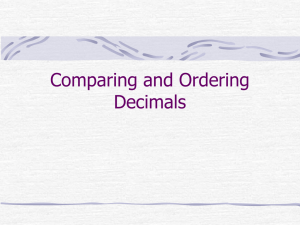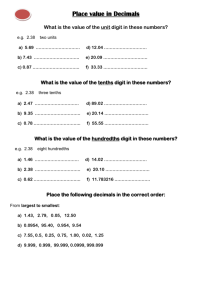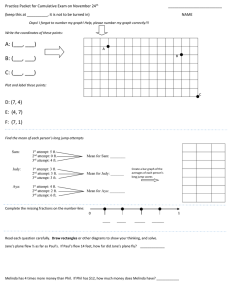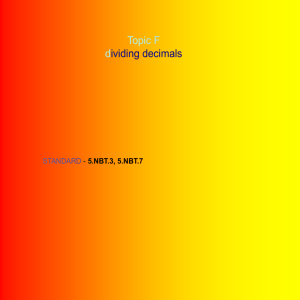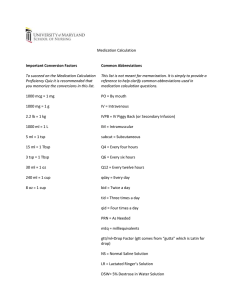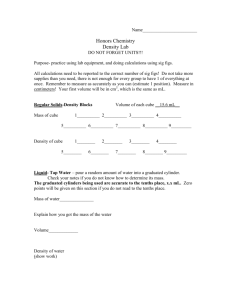Reading Between the Lines
advertisement
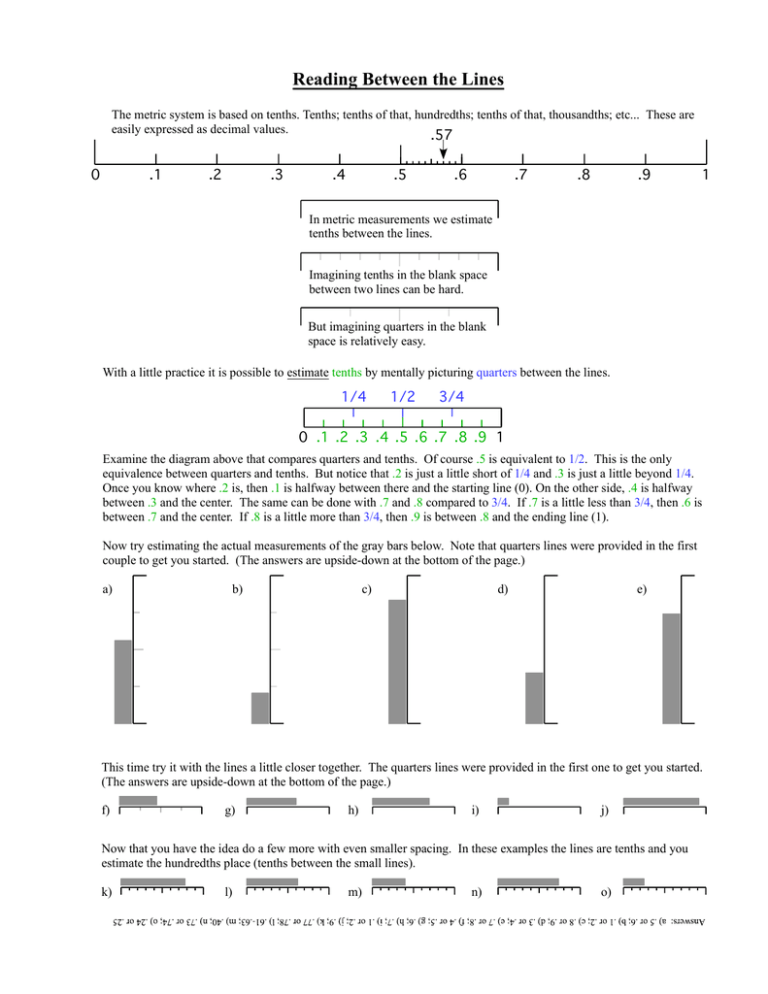
Reading Between the Lines The metric system is based on tenths. Tenths; tenths of that, hundredths; tenths of that, thousandths; etc... These are easily expressed as decimal values. .57 0 .1 .2 .3 .4 .5 .6 .7 .8 .9 1 In metric measurements we estimate tenths between the lines. Imagining tenths in the blank space between two lines can be hard. But imagining quarters in the blank space is relatively easy. With a little practice it is possible to estimate tenths by mentally picturing quarters between the lines. 1/4 1/2 3/4 0 .1 .2 .3 .4 .5 .6 .7 .8 .9 1 Examine the diagram above that compares quarters and tenths. Of course .5 is equivalent to 1/2. This is the only equivalence between quarters and tenths. But notice that .2 is just a little short of 1/4 and .3 is just a little beyond 1/4. Once you know where .2 is, then .1 is halfway between there and the starting line (0). On the other side, .4 is halfway between .3 and the center. The same can be done with .7 and .8 compared to 3/4. If .7 is a little less than 3/4, then .6 is between .7 and the center. If .8 is a little more than 3/4, then .9 is between .8 and the ending line (1). Now try estimating the actual measurements of the gray bars below. Note that quarters lines were provided in the first couple to get you started. (The answers are upside-down at the bottom of the page.) a) b) c) d) e) This time try it with the lines a little closer together. The quarters lines were provided in the first one to get you started. (The answers are upside-down at the bottom of the page.) f) g) h) i) j) Now that you have the idea do a few more with even smaller spacing. In these examples the lines are tenths and you estimate the hundredths place (tenths between the small lines). k) l) m) n) o)
